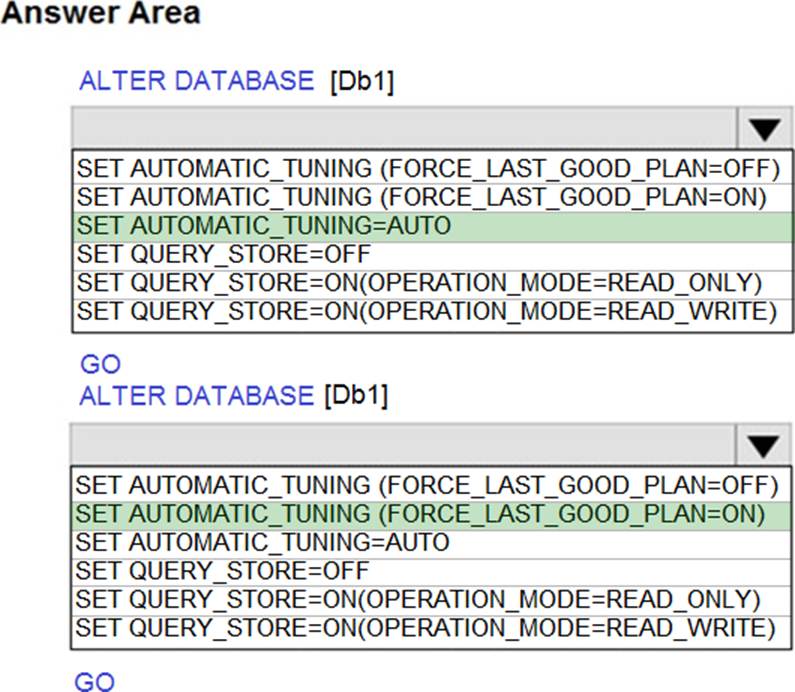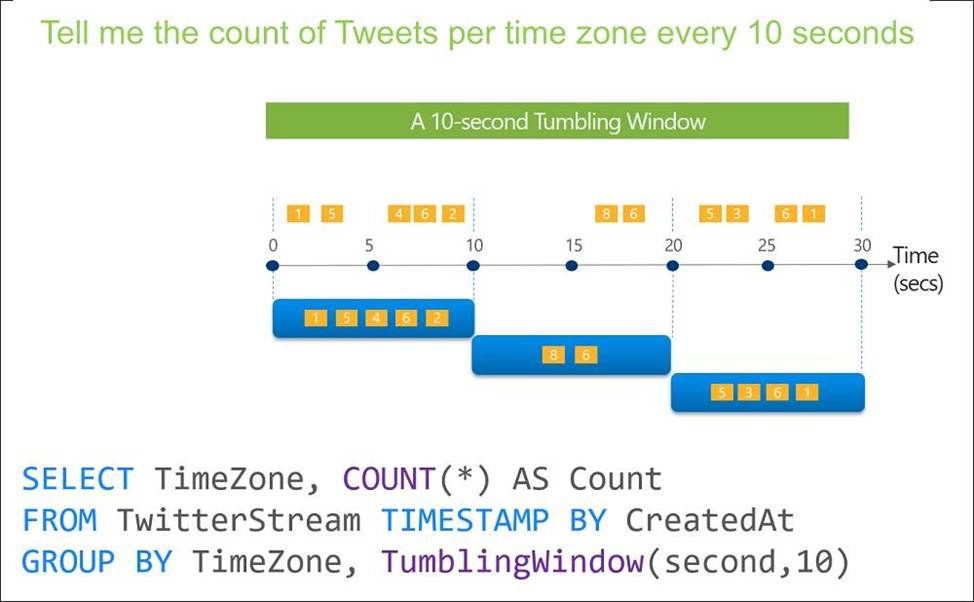Microsoft DP-300 Übungsprüfungen
Zuletzt aktualisiert am 12.12.2025- Prüfungscode: DP-300
- Prüfungsname: Administering Microsoft Azure SQL Solutions
- Zertifizierungsanbieter: Microsoft
- Zuletzt aktualisiert am: 12.12.2025
You have an Azure subscription that contains a SQL Server on Azure Virtual Machines instance named SQLVMI. SQLVMI hosts a database named OBI.
You need to retrieve query plans from the Query Store on DBI.
What should you do first?
- A . On SQLVM1, install the SQL Server laaS Agent extension.
- B . From Microsoft SQL Server Management Studio, modify the properties of the SQL Server instance.
- C . From Microsoft SQL Server Management Studio, modify the properties of DB 1.
- D . On SQLVM1, install the Azure Monitor agent for Windows.
HOTSPOT
You have SQL Server on an Azure virtual machine that contains a database named Db1.
You need to enable automatic tuning for Db1.
How should you complete the statements? To answer, select the appropriate answer in the answer area. NOTE: Each correct selection is worth one point.
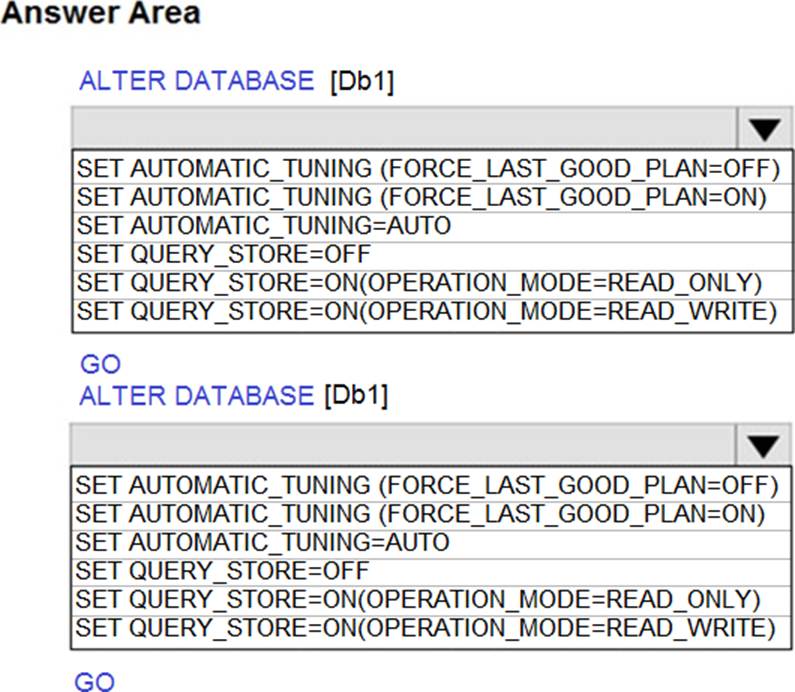
You have 10 Azure virtual machines that have SQL Server installed.
You need to implement a backup strategy to ensure that you can restore specific databases to other SQL Server instances. The solution must provide centralized management of the backups.
What should you include in the backup strategy?
- A . Automated Backup in the SQL virtual machine settings
- B . Azure Backup
- C . Azure Site Recovery
- D . SQL Server Agent jobs
Which windowing function should you use to perform the streaming aggregation of the sales data?
- A . Sliding
- B . Hopping
- C . Session
- D . Tumbling
HOTSPOT
You have an Azure Synapse Analytics dedicated SQL pool named Pool1 and an Azure Data Lake Storage Gen2 account named Account1.
You plan to access the files in Account1 by using an external table.
You need to create a data source in Pool1 that you can reference when you create the external table.
How should you complete the Transact-SQL statement? To answer, select the appropriate options in the answer area. NOTE: Each correct selection is worth one point.
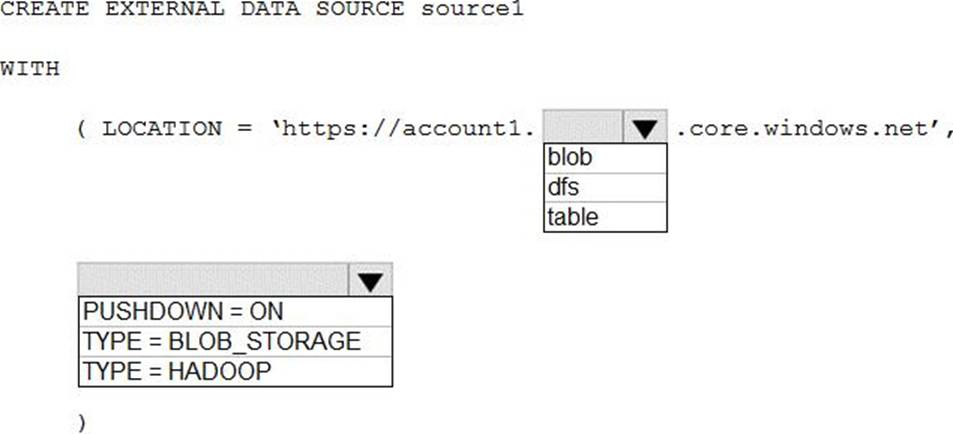
You receive numerous alerts from Azure Monitor for an Azure SQL database.
You need to reduce the number of alerts. You must only receive alerts if there is a significant change in usage patterns for an extended period.
Which two actions should you perform? Each correct answer presents part of the solution. NOTE: Each correct selection is worth one point.
- A . Set Threshold Sensitivity to High
- B . Set the Alert logic threshold to Dynamic
- C . Set the Alert logic threshold to Static
- D . Set Threshold Sensitivity to Low
- E . Set Force Plan to On
HOTSPOT
You have an Azure SQL database.
You have a query and the associated execution plan as shown in the following exhibit.
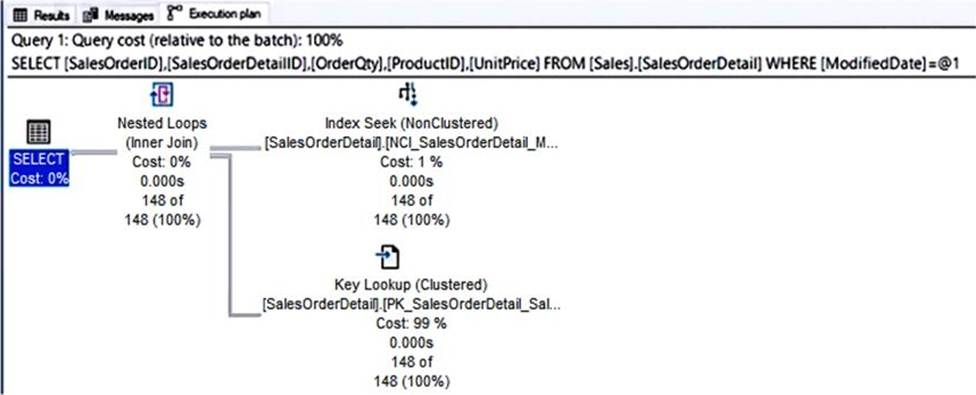
Use the drop-down menus to select the answer choice that completes each statement based on the information presented in the graphic. NOTE: Each correct selection is worth one point.

Note: This question is part of a series of questions that present the same scenario. Each question in the series contains a unique solution that might meet the stated goals. Some question sets might
have more than one correct solution, while others might not have a correct solution.
After you answer a question in this section, you will NOT be able to return to it. As a result, these questions will not appear in the review screen.
You have an Azure Synapse Analytics dedicated SQL pool that contains a table named Table1.
You have files that are ingested and loaded into an Azure Data Lake Storage Gen2 container named container1.
You plan to insert data from the files into Table1 and transform the data. Each row of data in the files will produce one row in the serving layer of Table1.
You need to ensure that when the source data files are loaded to container1, the DateTime is stored as an additional column in Table1.
Solution: You use a dedicated SQL pool to create an external table that has an additional DateTime column.
Does this meet the goal?
- A . Yes
- B . No
You have an Azure AD tenant and a logical Microsoft SQL server named SQL1 that hosts several Azure SQL databases.
You plan to assign Azure AD users permissions to the databases automatically by using Azure Automation.
You need to create the required Automation accounts.
Which two accounts should you create? Each correct answer presents part of the solution. NOTE: Each correct selection is worth one point.
- A . From the Azure Active Directory admin center, create a service principal.
- B . From the Azure Active Directory admin center, create a user-assigned managed identity for SQL1.
- C . On SQL1. create a SQL user in the databases.
- D . On SQL1, create a SQL login.
- E . From the Azure Active Directory admin center, create an external identity.
You have an Azure Data Factory pipeline that performs an incremental load of source data to an Azure Data Lake Storage Gen2 account.
Data to be loaded is identified by a column named LastUpdatedDate in the source table.
You plan to execute the pipeline every four hours.
You need to ensure that the pipeline execution meets the following requirements:
Automatically retries the execution when the pipeline run fails due to concurrency or throttling limits.
Supports backfilling existing data in the table.
Which type of trigger should you use?
- A . tumbling window
- B . on-demand
- C . event
- D . schedule

